Tata Nexon EV v Tata Nexon Petrol: Is it worth going for an electric variant?
With the hike in fuel prices, the transition to electric vehicles can be an economical choice in the long term. But you might be wondering how it makes sense to pay a few extra lakhs for the Nexon EV instead of the petrol variant? Here’s why!
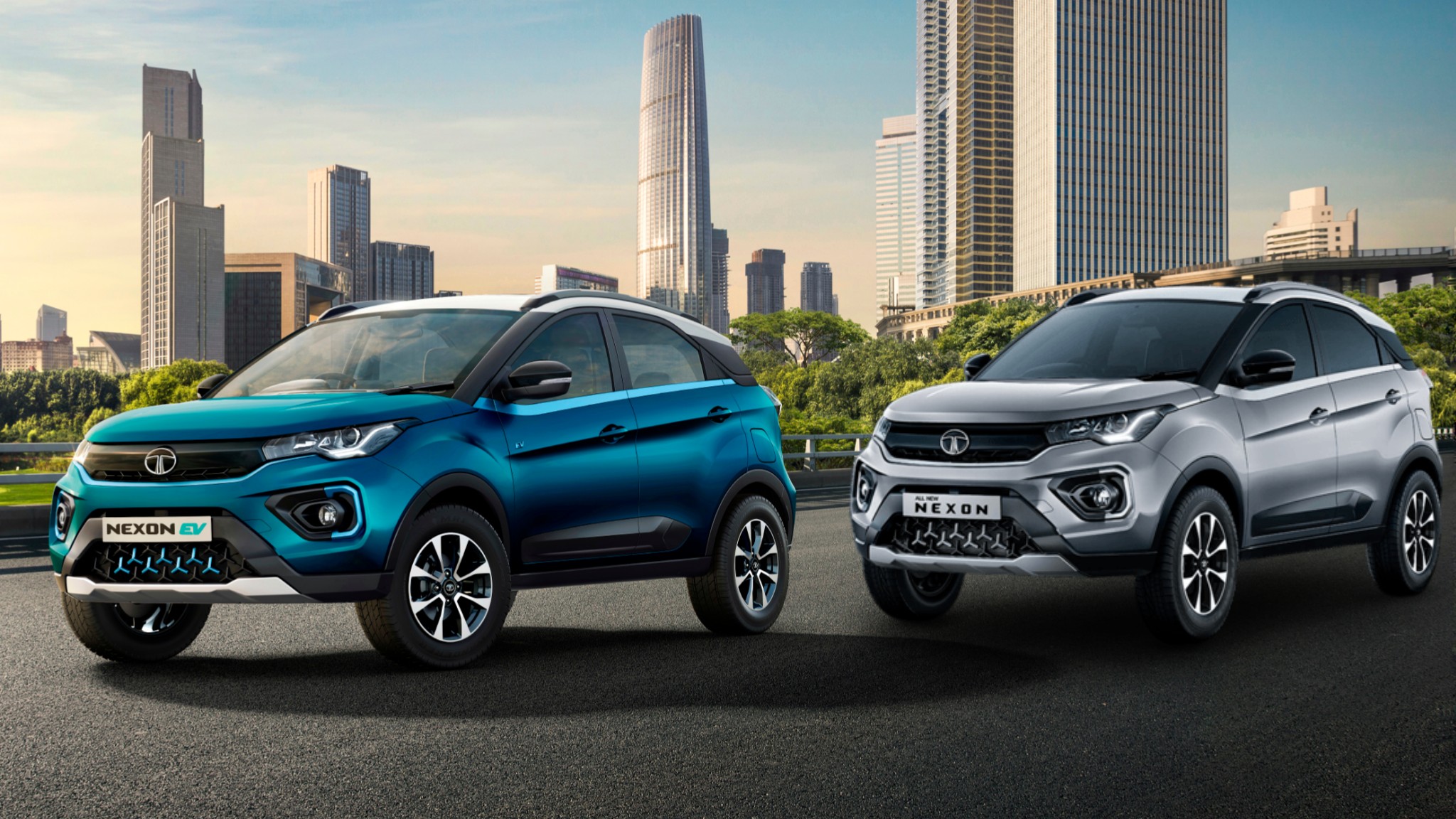 Both the cars are almost similar from outside with minor cosmetic changes
Both the cars are almost similar from outside with minor cosmetic changesFuel prices are going up by the day. In some metro cities, they have even touched the feared Rs 100-per-litre mark. Is this a good enough reason to switch over to an electric car? Maybe! To find out whether it makes sense, we’re going to take a look at the Tata Nexon — in both petrol and electric guises. On the face of it, they look similar but underneath the skin they are completely different, with the electric variant swapping out the engine and fuel tank for a floor-mounted battery pack and an electric motor. That’s not all though, the EV also costs a lot more. Is it worth the premium? For this comparison, we’re going to take the Nexon XZA+(O) with its turbo-petrol automatic drivetrain and put it up against the top-of-the-line XZ+ Nexon EV.
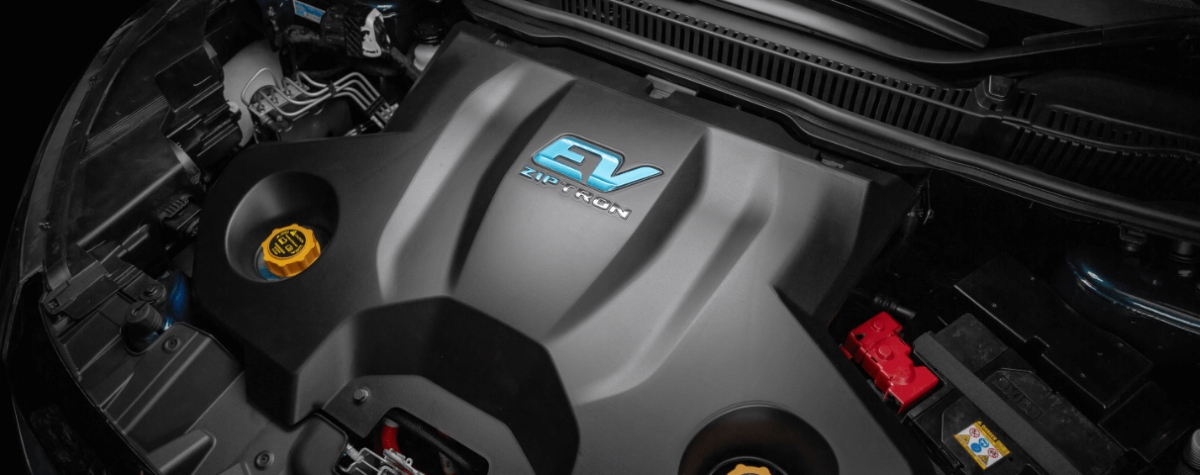 Along with a zippy performance the electric motor in the EV comes with an eight year warranty
Along with a zippy performance the electric motor in the EV comes with an eight year warranty Powertrain
The Nexon petrol gets a 1.2-litre engine mated to either a six-speed manual or six-speed automatic gearbox. The 1199cc motor churns out 118bhp and 170Nm of torque. The Nexon EV on the other hand, gets a Permanent Magnet Synchronous Motor (PMSM), producing 127bhp and 240Nm, with a 30.2kWh lithium-ion battery pack, paired to a single-speed transmission, and attains a top-speed of 120kmph. The EV also gets an option of two driving modes - Drive and Sport while the petrol variant gets three options — City, Eco and Sport. The ARAI certified range for the Nexon EV is 312km while the ARAI certified mileage for the Nexon petrol is 17kmpl. As we know the ARAI tests are carried at a set speed of 50kmph, the real world range for the EV asper our tests is around 200km while the mileage for the petrol can be expected around 11-12kmpl or more depending on one's driving. Now on paper, the Nexon EV is more powerful and torquier, but it weighs 1400kg, thanks to the heavy battery pack,while the Nexon petrol weighs 1188kg — 212kg lighter.
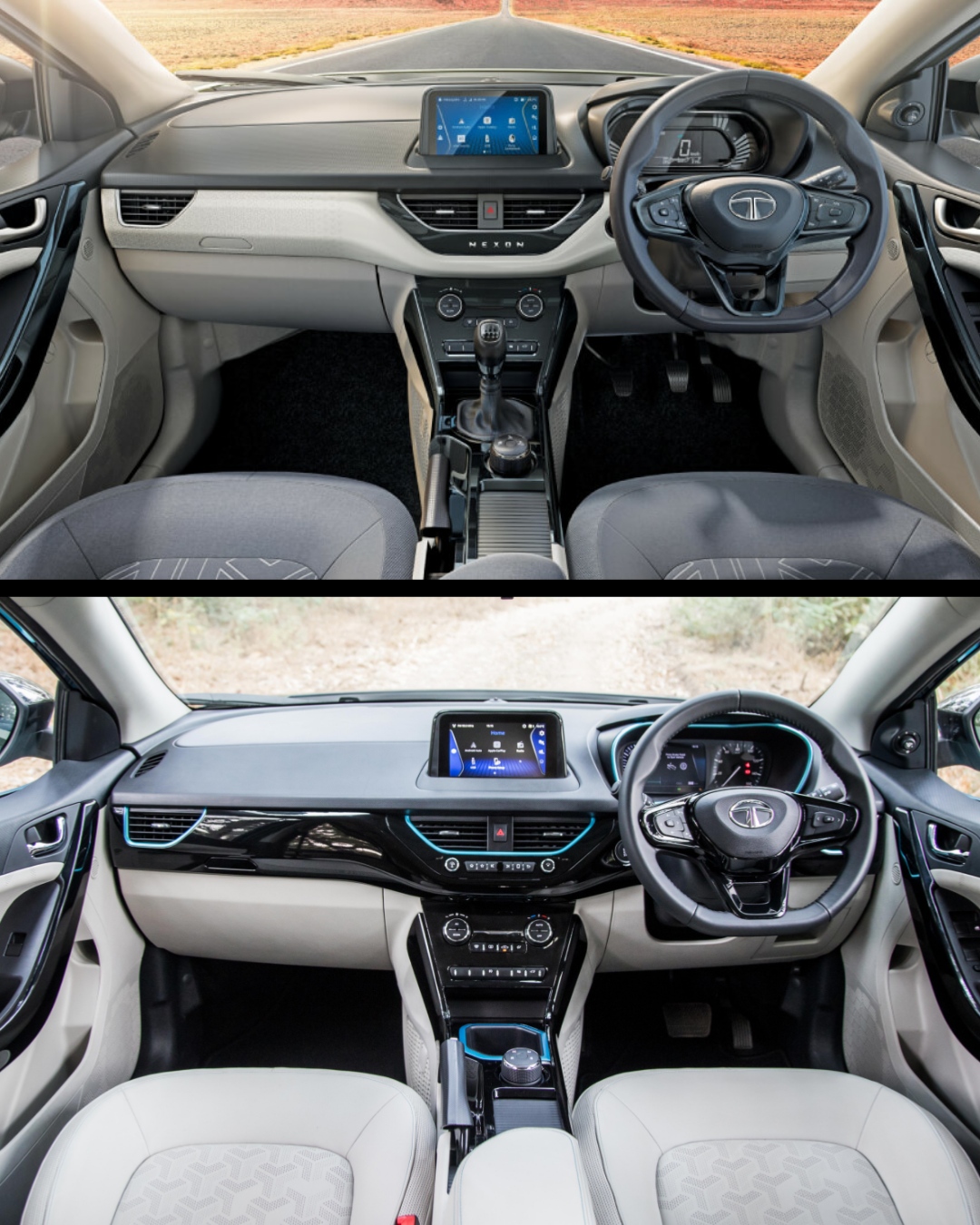 The layout is almost same with same features in both cars, except the absence of TPMS and Xpress cool feature in the EV
The layout is almost same with same features in both cars, except the absence of TPMS and Xpress cool feature in the EVFeatures
Both the Nexon EV XZ+Lux and the petrol Nexon XZA+(O) are equipped with the same features on the inside like a 7-inch touchscreen infotainment system, 8-speaker Harman sound system, electric sunroof and leatherette-wrapped steering wheel. On the outside, they get projector headlamps with DRLs, blacked-out ORVMs, 16-inch alloys, automatic headlamps and rain-sensing wipers. What the Nexon EV misses out is the Xpress Cool feature — which cools down the cabin quicker and the tyre pressure monitoring system (TPMS). While the Xpress Cool feature, or the lack of it, isn’t a dealbreaker, the TPMS feature could be very helpful in an EV, because low tyre pressures increase rolling resistance which hampers range.
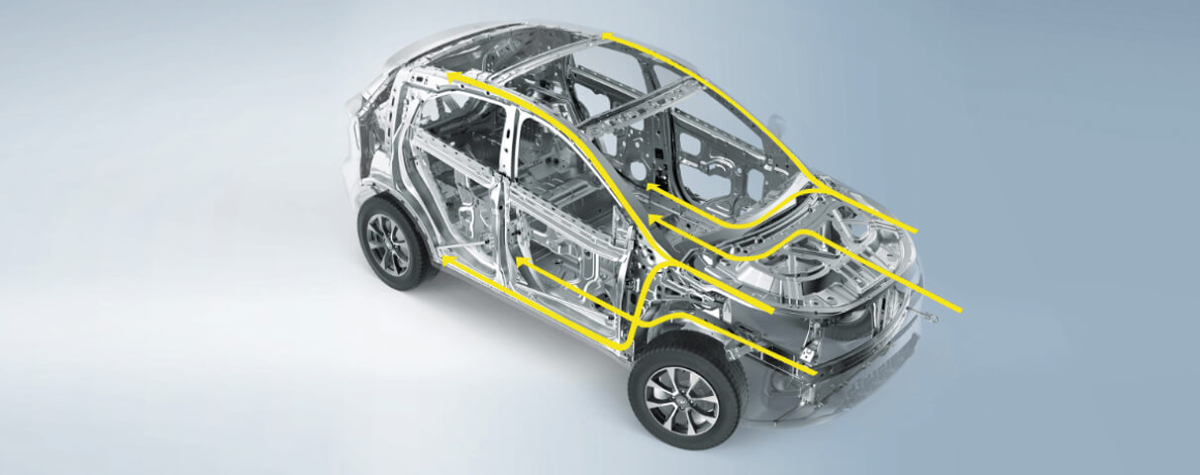 The cabin structure is made up of high-reinforced steel for your safety
The cabin structure is made up of high-reinforced steel for your safetySafety
The Nexon was the first car in India to receive a five-star rating in the global NCAP crash test. While the EV hasn’t been tested individually, expect the structural integrity to remain the same. The safety of batteries in the event of an accident is also a factor, though I don’t think it is something you should worry about. There are no tests to prove it, but it is unlikely that Tata Motors, with its stellar record for safety, would sell a car that is compromised in any manner. The safety kit on both the electric and the petrol are also the same, as both get dual airbags in the front, ABS with EBD, ISOFIX and front fog lamps. The Nexon EV however doesn’t get the safety features like Hill Hold Control and emergency brake assist, which is standard on the ICE powered Nexon.
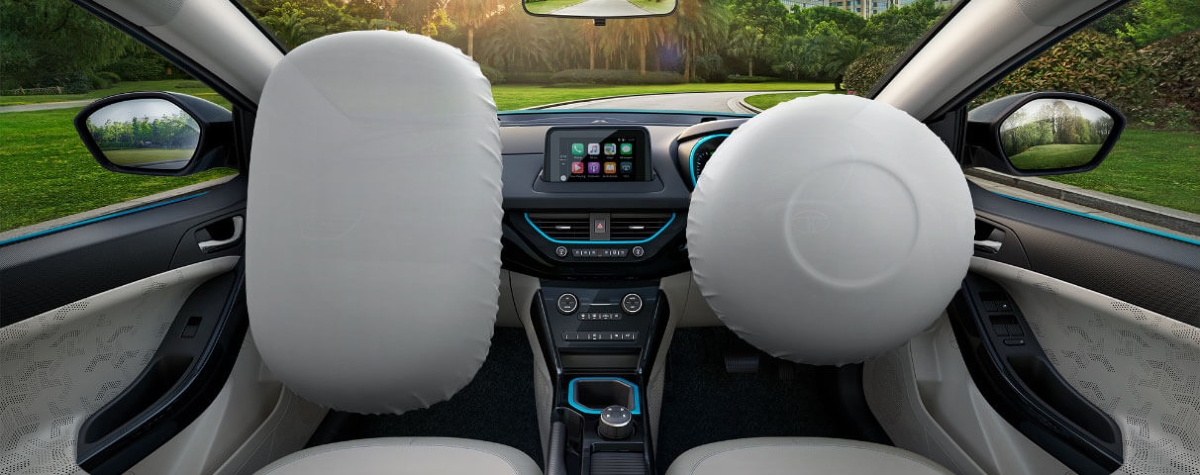 Both the cars come with dual airbags in the front
Both the cars come with dual airbags in the frontPricing
The Nexon petrol automatic in the entry-level XMA variant comes with a price tag of Rs 8.59 lakh that goes up to Rs 11.29 lakh for the range-topping XZA+(O) variant and Rs 11.49 lakh for the XZA+DT(O) variant in a dual-tone colour scheme. However, the Nexon EV in the entry-level XM variant comes with a price tag of Rs 13.99 lakh which goes up to Rs 16.40 lakh for the top-spec XZ+Lux variant. Why should you be paying the extra five lakh rupees for the same car with the same features and safety kit? To answer that we have calculated per kilometer cost for both the cars on a monthly and annual basis, excluding their maintenance costs.
The range of both cars have been assumed for real world conditions
The rates of petrol and electricity are from New Delhi region for reference
The maintenance costs have been excluded from this calculation
Government of certain states provides subsidy on income tax for usage of electric vehicles, which is added benefit over annual savings
The annual saving excludes the EMI costs, and can be considered for reference if the car is not bought through bank loans
Also, the per unit charge of electricity and petrol may vary from region to region, making a difference in per km cost of the cars
The Nexon EV saves you approximately Rs 76,000 every year, simply with fuel costs. This excludes the service costs which are lower for EVs since they don’t require expensive engine oil, and regular maintenance. Then there’s the benefits from the state governments you get when you buy these cars. Some waive off registration, some waive road tax and in the case of Delhi, it is also offering a straight up incentive of Rs 1.5 lakh.
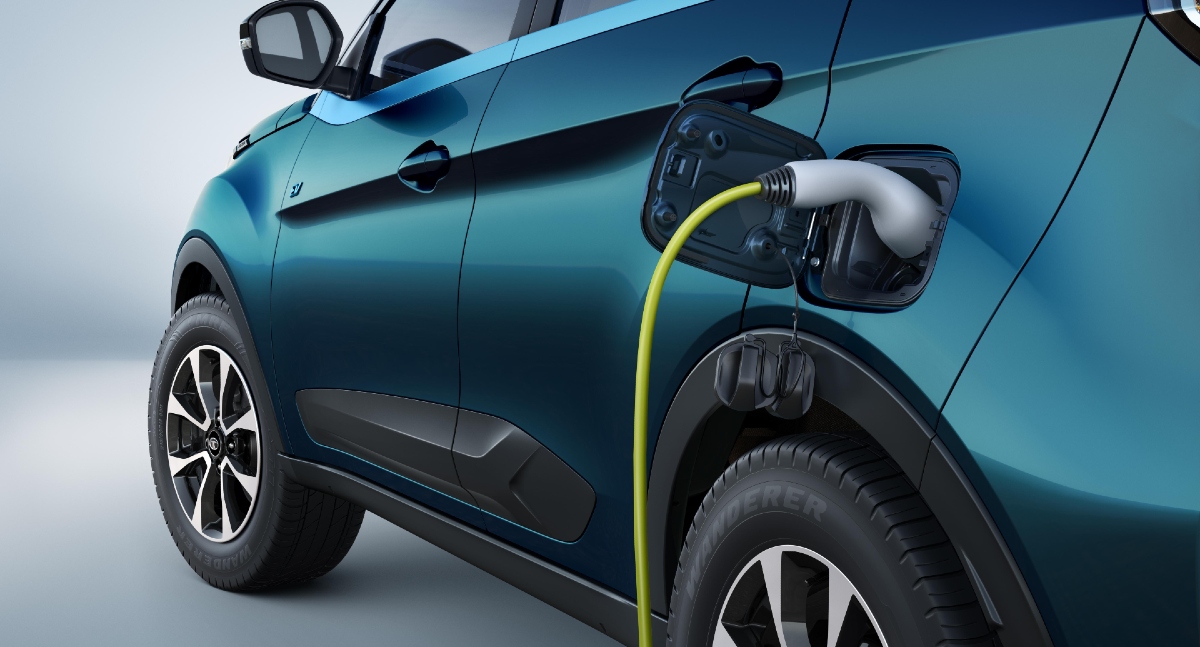 0-80% charge in just 60 minutes using a fast charger, while the EV can also be plugged-in at homes using 15A sockets
0-80% charge in just 60 minutes using a fast charger, while the EV can also be plugged-in at homes using 15A socketsAlso, with the Nexon EV you can avail the subscription option on a monthly basis, where you pay a pre-calculated amount, that differs from city to city. The subscription charges include the maintenance cost of the car at a down payment of zero rupees, whereas there is no such offer on the petrol variants. To sum it up, electric cars are viable alternatives to petrol cars at the moment. They have their limitations when it comes to range, and that restricts them to the urban context but that shouldn’t stop you from exploring this option as the savings to your wallet are significant!


